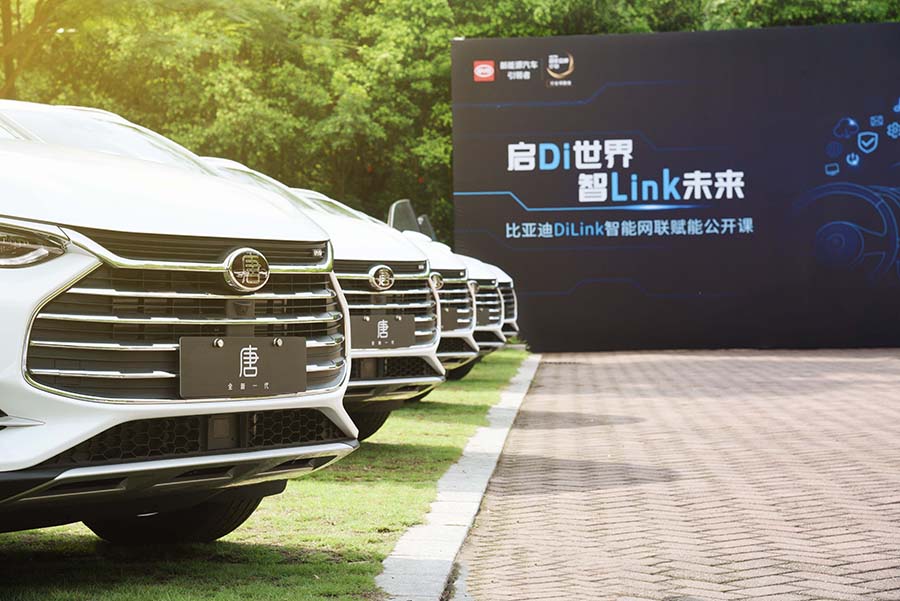Analyzing The China Market: Why BMW And Porsche Are Facing Difficulties

Table of Contents
The Rise of Domestic Chinese Automakers
The rapid ascent of domestic Chinese automakers is a primary factor impacting international brands. Companies like BYD, NIO, and Xpeng are not only surviving but thriving, fueled by technological advancements and a deep understanding of the local market. Their success stems from several key areas:
-
Technological Prowess: These brands are pushing the boundaries of electric vehicle (EV) technology, offering competitive ranges, advanced features, and sophisticated driver-assistance systems. This is particularly challenging for established players who may be slower to adapt to the rapid pace of EV innovation in China.
-
Understanding the Local Consumer: Domestic brands excel at understanding and catering to the unique needs and preferences of Chinese consumers. This includes factors like design aesthetics, preferred features, and pricing strategies.
-
Aggressive Marketing and Targeting: These companies employ highly effective marketing strategies, often leveraging social media and influencer marketing to reach younger demographics. Their marketing campaigns resonate strongly with the target audience, creating significant brand loyalty.
-
Government Support: Significant government support and subsidies for domestic EV brands provide a considerable advantage, making their vehicles more affordable and further boosting their market share.
Shifting Consumer Preferences in China
The Chinese automotive market isn't just growing; it's evolving at an astonishing rate. Consumer preferences are shifting dramatically, presenting significant challenges for traditional luxury brands.
-
Electrification is Key: The demand for electric and hybrid vehicles is surging, driven by government policies promoting sustainable transportation and increasing environmental awareness among consumers. BMW and Porsche, while investing in EVs, are still largely known for their combustion engine vehicles, creating a competitive disadvantage.
-
Technology and Connectivity: Chinese consumers are demanding more technologically advanced vehicles with advanced driver-assistance systems (ADAS), sophisticated infotainment systems, and seamless smartphone integration. Smart connectivity features are no longer a luxury but an expectation.
-
Social Media Influence: Social media platforms like WeChat and Weibo significantly influence purchasing decisions. Online reviews, influencer endorsements, and social media buzz are crucial factors in brand perception and sales. Negative online sentiment can quickly damage a brand's reputation.
-
Personalization and Customization: There's a growing demand for personalized and customized vehicle options, allowing consumers to tailor their vehicles to their individual preferences. This trend necessitates flexible manufacturing and supply chain strategies.
Economic and Geopolitical Factors
Macroeconomic factors and geopolitical events also play a significant role in the challenges faced by BMW and Porsche.
-
Economic Slowdowns: Fluctuations in the Chinese economy, including periods of slower growth, directly impact luxury car sales. Consumers are more cautious with their spending during such times, affecting demand for premium vehicles.
-
Trade Tensions and Tariffs: Trade tensions and fluctuating import tariffs can increase the cost of imported vehicles, making them less competitive compared to domestically produced alternatives.
-
Supply Chain Disruptions: Global supply chain disruptions, exacerbated by geopolitical events, can lead to production delays, increased costs, and shortages of key components. This instability impacts the availability and pricing of vehicles.
-
Currency Fluctuations: Fluctuations in the Chinese Yuan affect the pricing and profitability of imported vehicles. Unfavorable exchange rates can significantly impact the competitiveness of international brands.
BMW and Porsche's Strategic Responses
Recognizing the challenges, BMW and Porsche are actively adapting their strategies to navigate the complexities of the Chinese market.
-
Localization and EV Investment: Both brands are investing heavily in local manufacturing and the development of electric vehicles tailored to the Chinese market. This includes establishing local production facilities and developing models specifically designed for Chinese consumer preferences.
-
Brand Image Management: Porsche is particularly focused on maintaining its exclusive brand image and luxury appeal in the face of increasing competition. This requires carefully balancing price and prestige in a market becoming increasingly price-sensitive.
-
Targeted Marketing: Both companies are refining their marketing and branding strategies to resonate more effectively with Chinese consumers, leveraging social media and aligning their messaging with local cultural nuances.
-
Strategic Partnerships: Forming partnerships with Chinese companies provides access to local expertise, supply chains, and distribution networks, offering a competitive edge.
Analyzing the China Market: Key Takeaways and Future Outlook
The Chinese automotive market presents significant challenges for international brands like BMW and Porsche. The rise of competitive domestic automakers, shifting consumer preferences towards electric vehicles and technology, and economic uncertainties all contribute to these difficulties. Successfully navigating this market requires a deep understanding of local dynamics, a commitment to localization, and a willingness to adapt strategies quickly.
To stay ahead in the rapidly evolving automotive landscape, continue analyzing the China market and its impact on premium brands. Deepen your understanding of the complexities of the Chinese automotive market by exploring further analysis on this crucial sector. The ability to adapt and innovate will be crucial for success in this vital and increasingly competitive automotive market.

Featured Posts
-
 Activision Blizzard Deal Ftcs Appeal Process And Potential Outcomes
Apr 26, 2025
Activision Blizzard Deal Ftcs Appeal Process And Potential Outcomes
Apr 26, 2025 -
 Nfl Drafts First Round Green Bays Big Night
Apr 26, 2025
Nfl Drafts First Round Green Bays Big Night
Apr 26, 2025 -
 Covid 19 Pandemic Lab Owner Admits To Falsifying Test Results
Apr 26, 2025
Covid 19 Pandemic Lab Owner Admits To Falsifying Test Results
Apr 26, 2025 -
 Will Chinese Cars Dominate The Global Market An Analysis
Apr 26, 2025
Will Chinese Cars Dominate The Global Market An Analysis
Apr 26, 2025 -
 Trumps Economic Policies And The Next Federal Reserve Chairmans Agenda
Apr 26, 2025
Trumps Economic Policies And The Next Federal Reserve Chairmans Agenda
Apr 26, 2025
Latest Posts
-
 From Scatological Documents To Podcast Gold The Power Of Ai
Apr 26, 2025
From Scatological Documents To Podcast Gold The Power Of Ai
Apr 26, 2025 -
 Turning Poop Into Prose An Ai Powered Podcast Revolution
Apr 26, 2025
Turning Poop Into Prose An Ai Powered Podcast Revolution
Apr 26, 2025 -
 Pandemic Fraud Lab Owner Convicted For Falsified Covid Test Results
Apr 26, 2025
Pandemic Fraud Lab Owner Convicted For Falsified Covid Test Results
Apr 26, 2025 -
 Guilty Plea Lab Owner Admits To Fraudulent Covid 19 Testing
Apr 26, 2025
Guilty Plea Lab Owner Admits To Fraudulent Covid 19 Testing
Apr 26, 2025 -
 Covid 19 Pandemic Lab Owner Admits To Falsifying Test Results
Apr 26, 2025
Covid 19 Pandemic Lab Owner Admits To Falsifying Test Results
Apr 26, 2025
